Imagine transforming your garden into a lush oasis with just one plant! The giant elephant ear plant, also known as Alocasia odora, offers an impressive way to elevate your gardening game. With its unique foliage and adaptability, it’s no wonder this plant has become a favorite among enthusiasts. Join us as we uncover the compelling reasons to include the elephant ear plant in your gardening plans and share tips for ensuring it thrives beautifully in your space.
Why Choose the Elephant Ear Plant?
The elephant ear plant isn’t just a feast for the eyes; it brings a unique flair that can transform any garden into a tropical paradise. With its large, heart-shaped leaves, this plant makes a bold statement, serving as a stunning focal point in landscaping or as an eye-catching indoor accent. For those looking to create a lush atmosphere, consider the pink elephant ear plant variety, which adds a splash of color that can brighten up even the dullest corners of your home or garden.
In addition to their aesthetic appeal, elephant ear plants are surprisingly easy to care for, making them a perfect choice for both novice and experienced gardeners. They thrive in warm, humid environments and require minimal maintenance, which means you can enjoy their beauty without the stress of constant upkeep. By incorporating proper elephant ear plant care techniques — like providing well-draining soil and consistent watering — you can ensure these magnificent plants flourish throughout the growing season. With their versatility and vibrant presence, it’s no wonder that the elephant ear plant has become a must-have for gardening enthusiasts!
Stunning Foliage: A Visual Delight
The Elephant Ear plant, with its large, heart-shaped leaves, creates a dramatic visual impact in any garden or indoor space. These lush green giants not only serve as a stunning backdrop but also add a tropical vibe that can transform your environment into a serene oasis. Imagine stepping into your garden and being greeted by the vibrant foliage that sways gently in the breeze, creating a peaceful atmosphere that invites relaxation and contemplation.
To maximize the visual delight of your Elephant Ears, consider combining them with contrasting plants. Pairing their bold leaves with colorful blooms like hibiscus or delicate ferns can elevate your landscape design. Additionally, experimenting with different pot sizes and textures can enhance their dramatic presence — think rustic terracotta pots or sleek modern containers that complement their striking form. Whether you’re an experienced gardener or just starting, learning how to plant Elephant Ears and understanding Alocasia care will ensure that these magnificent plants thrive and captivate all who encounter them.
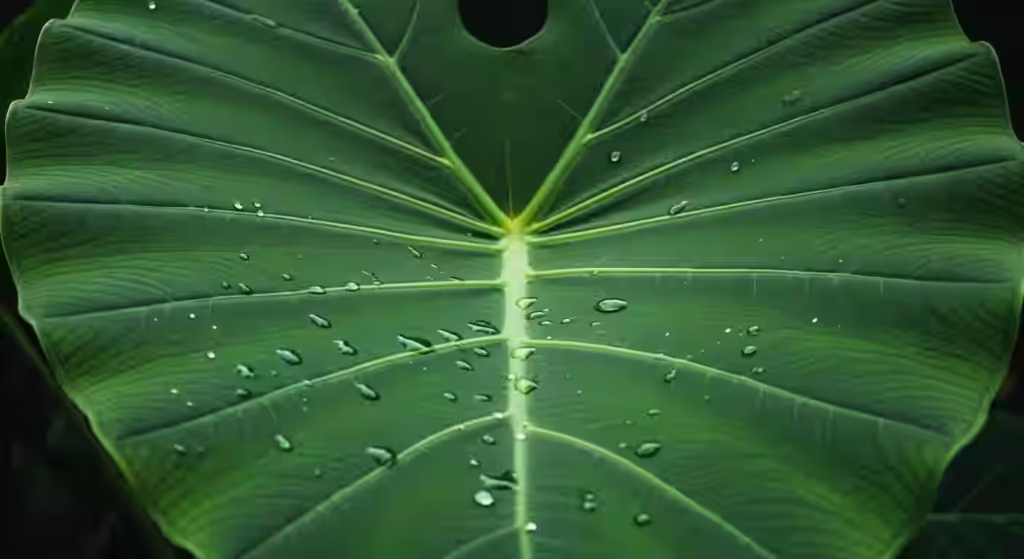
Versatile Planting Options for Gardens
When considering the integration of the Elephant Ear plant into your garden, think beyond traditional beds. These stunning plants thrive in a variety of settings, making them perfect for containers, borders, or even as focal points in mixed arrangements. For instance, pairing them with colorful annuals like petunias or marigolds can create a vibrant tapestry that captures attention throughout the growing season.
Additionally, don’t overlook the advantages of vertical gardening. Elephant Ears can beautifully complement climbing plants or be positioned near trellises, adding height and drama to your outdoor space. Consider planting them alongside ornamental grasses or perennials like hostas to achieve a lush, layered look. With their bold foliage, Elephant Ears not only enhance the visual appeal but also provide a striking backdrop that allows other plants to shine. Embrace these versatile planting options to maximize your garden’s potential!
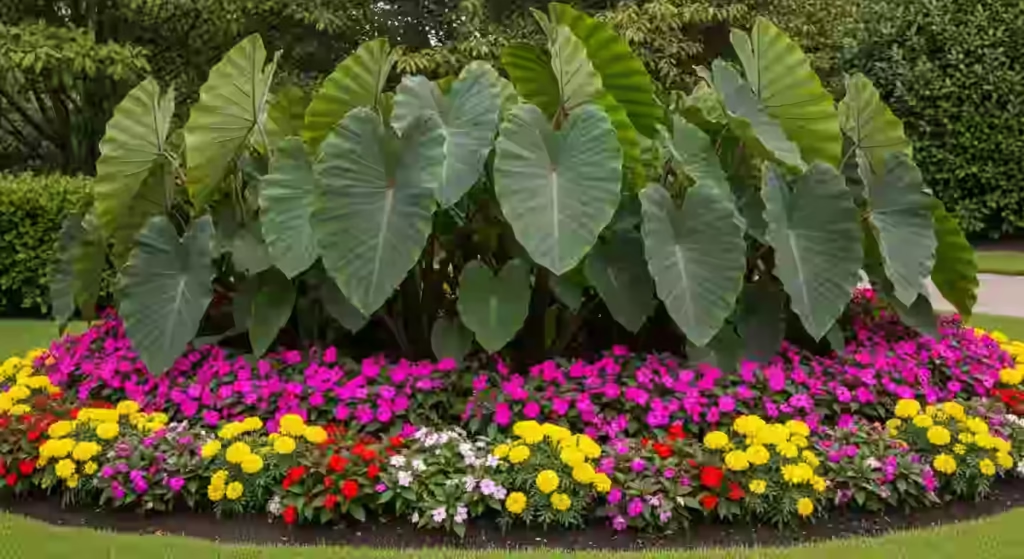
Easy Care Tips for Thriving Growth
To ensure your Elephant Ear plant flourishes, start with the right location. These tropical beauties love bright, indirect sunlight but can also thrive in partial shade. Position them near a window where they can soak up the light without being scorched.
Watering is another essential factor. Keep the soil consistently moist but avoid waterlogging. A good rule of thumb is to check the top inch of soil; if it feels dry, it’s time to water! Additionally, incorporating a balanced fertilizer every 4-6 weeks during the growing season will provide the nutrients needed for those stunning, large leaves to develop.
Don’t forget about humidity! These plants thrive in humid environments, so consider misting their leaves regularly or placing a humidifier nearby. If you notice the edges of the leaves browning, it’s a sign they’re not getting enough moisture. With these simple yet effective care tips, your Elephant Ear plant will be a showstopper in your garden or home!
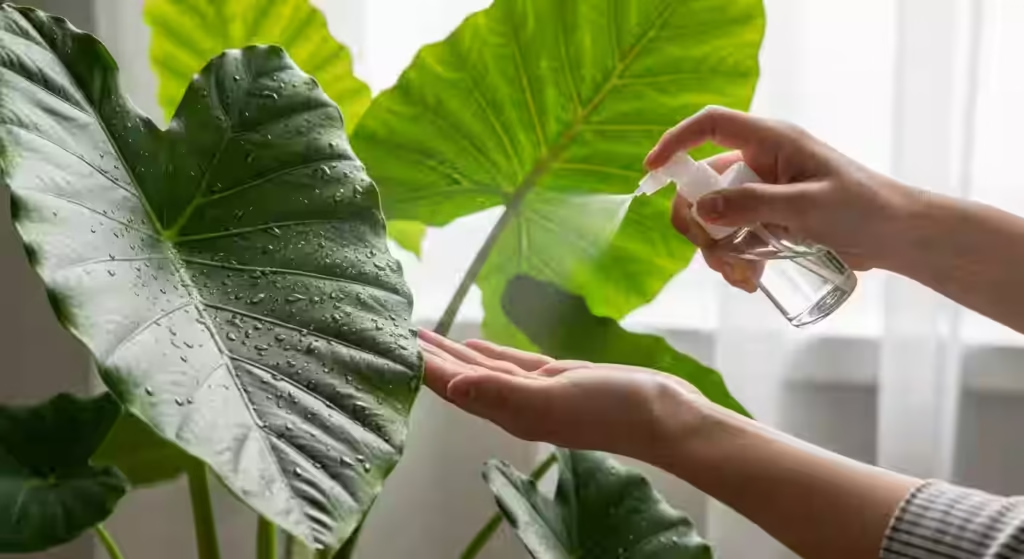
Ideal Climate Conditions for Success
To thrive, the Elephant Ear plant requires a warm, humid environment that mimics its native tropical habitat. Ideally, these striking plants flourish in temperatures ranging from 65°F to 80°F (18°C to 27°C). When placed in partial shade or filtered sunlight, they can prevent leaf scorch and maintain their vibrant color.
Humidity is another critical factor; this plant loves moisture! Aim for a relative humidity level of at least 50%. If your home is dry, consider misting the leaves or using a pebble tray filled with water to increase humidity around the plant. Additionally, regular watering — ensuring the soil is consistently moist but not waterlogged — will help your Elephant Ear achieve its full potential, leading to robust growth and stunning foliage.
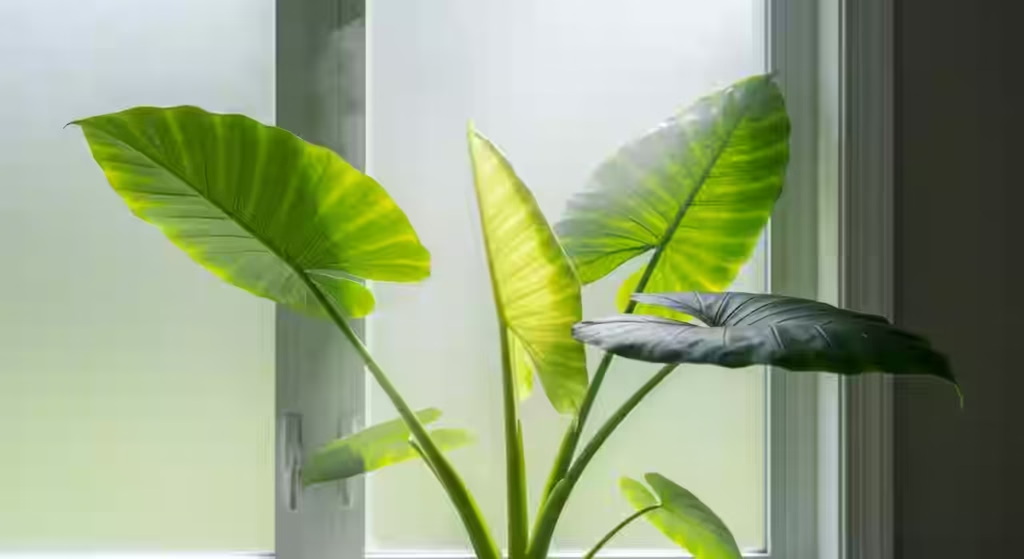
Attracting Wildlife: Birds and Butterflies
Creating a haven for birds and butterflies in your garden is easier than you might think! Start by incorporating native plants, which provide essential nectar and food sources for these beautiful creatures. The Elephant Ear plant, with its large, lush leaves, offers the perfect backdrop for flowering plants that attract pollinators. Consider pairing it with colorful blossoms like coneflowers and black-eyed Susans, which are known to draw in butterflies and hummingbirds alike.
In addition to planting, think about adding water features or birdbaths. These not only serve as hydration sources but also create a tranquil atmosphere that invites wildlife to linger. Position your birdbath near the Elephant Ear plant to create a delightful natural scene. Remember, providing shelter is crucial; leaving some areas of your garden a bit wild can offer nesting spots for birds and resting places for butterflies. By fostering a vibrant ecosystem, you’ll enjoy the added beauty and activity of wildlife while enhancing the charm of your garden!
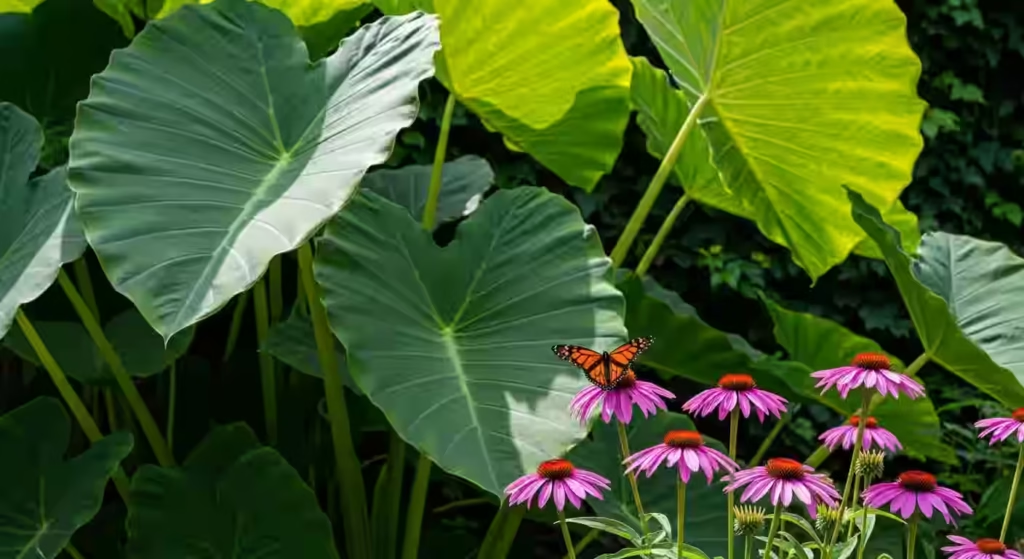
Common Pests and How to Manage Them
The Elephant Ear plant, with its lush foliage, can attract a few unwanted guests. Common pests include aphids, spider mites, and mealybugs. These tiny invaders can sap the plant’s vitality if not addressed promptly. To spot them early, inspect the undersides of leaves and look for sticky residue or webbing.
Managing these pests can be straightforward with a few effective strategies. Start by spraying the affected areas with a mixture of water and mild soap to dislodge pests without harming your plant. For a more natural approach, introduce beneficial insects like ladybugs that prey on aphids. Additionally, keeping your plant’s environment clean and ensuring adequate airflow can deter infestations. Regularly checking your Elephant Ear will not only keep it thriving but also enhance your gardening experience!
Creative Uses in Home Decor
Transforming your living space with the striking foliage of the Elephant Ear plant can be both stylish and functional. Consider using large leaves as natural art pieces; a single, dramatic leaf can serve as a stunning focal point on a mantel or coffee table. For those with a flair for creativity, why not create a tropical-themed gallery wall? Frame dried Elephant Ear leaves alongside vibrant prints to bring an exotic touch indoors.
Another innovative idea is to incorporate these lush plants into your room’s color palette. The rich greens of the leaves pair beautifully with neutral tones, creating a serene backdrop. Arrange the plants in decorative pots that complement your existing decor — think textured ceramics or bold, colorful planters that add character. You can also group smaller Elephant Ears on shelves or window sills to create layers and depth, inviting a sense of nature into your home while enhancing the overall aesthetic. Embrace the versatility of the Elephant Ear plant and let your imagination run wild!
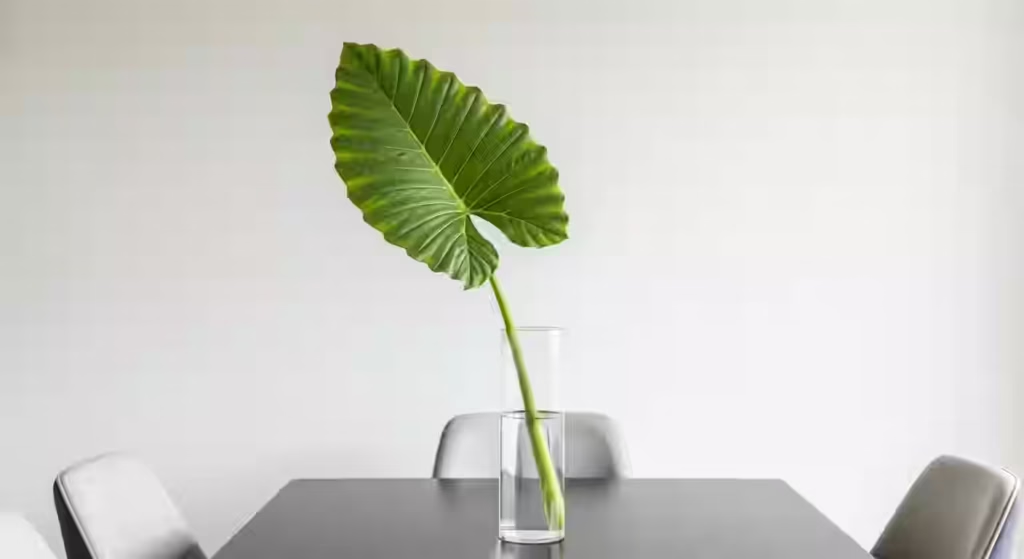
Elevate Your Garden with Elephant Ears!
Incorporating elephant ear plants into your garden design can transform your outdoor space into a tropical paradise.With their large, heart-shaped leaves reaching up to three feet wide, these striking plants not only serve as stunning focal points but also provide a lush backdrop for smaller flowers and shrubs. Consider planting them in clusters or alongside contrasting foliage to create a dynamic visual impact that draws the eye and adds depth to your landscape.
Moreover, elephant ears thrive in a variety of conditions, making them versatile companions for your garden. They prefer rich, moist soil and partial to full sunlight, allowing you to place them in different areas depending on your garden’s layout. For an added touch of creativity, why not experiment with different varieties? From the vibrant ‘Mammoth’ to the dramatic Black Magic each type brings its unique flair. Embrace the opportunity to mix and match these bold plants with other garden elements, such as decorative stones or water features, to craft a serene outdoor retreat that reflects your personal style.
# FAQs About the Elephant Ear Plant
What is the Elephant Ear Plant?
The Elephant Ear Plant, scientifically known as Alocasia or Colocasia, is a tropical perennial known for its large, heart-shaped leaves that can grow up to several feet in size.
Why should I include the Elephant Ear Plant in my garden?
This plant adds dramatic foliage and a lush, tropical vibe to your garden. Its striking appearance makes it a focal point in landscaping, while its size creates a sense of depth.
What are the ideal growing conditions for Elephant Ear Plants?
Elephant Ear Plants thrive in warm, humid environments with partial to full shade. They prefer well-draining soil rich in organic matter and require regular watering to keep the soil consistently moist.
How do I care for my Elephant Ear Plant?
– Watering: Keep the soil moist but not soggy.
– Fertilizing: Use a balanced fertilizer every few weeks during the growing season.
– Pruning: Remove any yellow or damaged leaves to encourage new growth.
Can Elephant Ear Plants be grown indoors?
Yes! Elephant Ear Plants can be grown indoors, provided they receive adequate light and humidity. Ensure they are placed in a bright location, and consider using a humidifier or pebble tray for moisture.
Are Elephant Ear Plants safe for pets?
While many varieties of Elephant Ear Plants are considered toxic to pets if ingested, they can still be enjoyed safely by keeping them out of reach of curious animals.
How do I propagate my Elephant Ear Plant?
You can propagate Elephant Ear Plants through division. Simply separate the tubers during the spring when you repot or transplant, ensuring each piece has healthy roots and shoots.
What pests should I watch out for with Elephant Ear Plants?
Common pests include aphids, spider mites, and mealybugs. Regularly inspect your plants and treat any infestations promptly with insecticidal soap or neem oil to keep them healthy.





